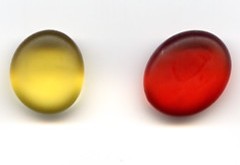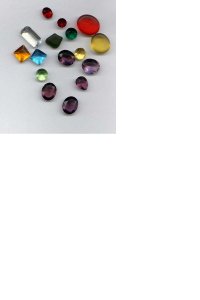You are using an out of date browser. It may not display this or other websites correctly.
You should upgrade or use an alternative browser.
You should upgrade or use an alternative browser.
12 carat cut red emerald price?
- Thread starter malu
- Start date
- Status
- Not open for further replies. Please create a new topic or request for this thread to be opened.
- Joined
- Feb 17, 2004
- Messages
- 1,104
You don't say whether you're certain it's natural. The largest known cut natural bixbite I've heard of to date is around 8 carats although larger ones may exist. A 12 carat natural stone, if nice, would be very valuable and probably a candidate for a museum collection. Have you had it evaluated by a gemologist?
Synthetic hydrothermal bixbite, on the other hand, sells for around $7 a carat in the rough. Figuring 60% cutting loss (depending on the shapes of the rough and the finished stone it could be more or less) a 30 carat rough would be needed to finish a 12 carat gem.
Synthetic hydrothermal bixbite, on the other hand, sells for around $7 a carat in the rough. Figuring 60% cutting loss (depending on the shapes of the rough and the finished stone it could be more or less) a 30 carat rough would be needed to finish a 12 carat gem.
dear Richard,
Thank you for your reply.It has just been given to a gems institute to get its appraisal.Let me tell you that the treasury has been found in Africa in an area where there were no such (enhancing)technichs for synthetic gems 50 years ago.So if it comes that it is a natural cut gemstones of 12, what should I do?Wold you assit me?There is another stone of 8 carat not yet identified but similar to the red one.it is yellow/orange.
cheers
Thank you for your reply.It has just been given to a gems institute to get its appraisal.Let me tell you that the treasury has been found in Africa in an area where there were no such (enhancing)technichs for synthetic gems 50 years ago.So if it comes that it is a natural cut gemstones of 12, what should I do?Wold you assit me?There is another stone of 8 carat not yet identified but similar to the red one.it is yellow/orange.
cheers
- Joined
- Feb 17, 2004
- Messages
- 1,104
How interesting! A 50-year-old natural bixbite of 12 carats from Africa would be a newsworthy event. Was it found in Nigeria by any chance? By all means share the gemological report with us here and give us all important details, including the name and location of the firm. Be sure to tell us what the report says that distinguishes the stone as natural red beryl.
A yellow-orange stone could be anything: corundum, spinel, tourmaline, garnet, topaz, quartz, zircon -- and many others.
Richard M.
A yellow-orange stone could be anything: corundum, spinel, tourmaline, garnet, topaz, quartz, zircon -- and many others.
Richard M.
Cave Keeper
Shiny_Rock
- Joined
- Jun 30, 2004
- Messages
- 264
Richard Sherwood
Ideal_Rock
- Joined
- Sep 25, 2002
- Messages
- 4,924
- Status
- Not open for further replies. Please create a new topic or request for this thread to be opened.
Share:
Featured Topics
The Ultimate Guide to Men’s Wedding Bands: Metals, Fit & Finish
The Ultimate Guide to Men’s Wedding Bands: Metals, Fit & Finish - 06/27
Chipped Diamonds: Causes, Risks, and What You Should Do About It
Chipped Diamonds: Causes, Risks, and What You Should Do About It - 06/27






300x240.png)